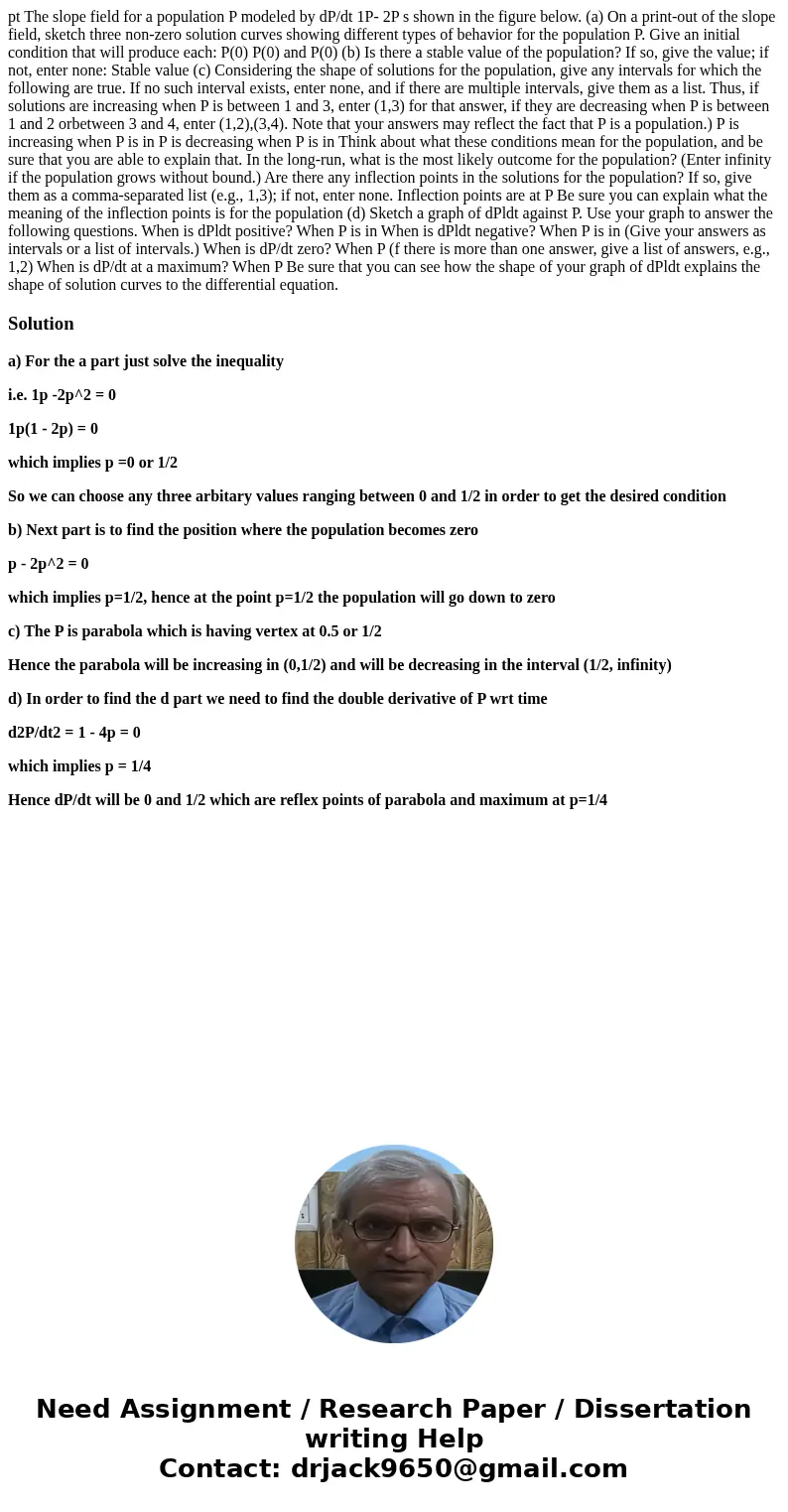pt The slope field for a population P modeled by dPdt 1P 2P
pt The slope field for a population P modeled by dP/dt 1P- 2P s shown in the figure below. (a) On a print-out of the slope field, sketch three non-zero solution curves showing different types of behavior for the population P. Give an initial condition that will produce each: P(0) P(0) and P(0) (b) Is there a stable value of the population? If so, give the value; if not, enter none: Stable value (c) Considering the shape of solutions for the population, give any intervals for which the following are true. If no such interval exists, enter none, and if there are multiple intervals, give them as a list. Thus, if solutions are increasing when P is between 1 and 3, enter (1,3) for that answer, if they are decreasing when P is between 1 and 2 orbetween 3 and 4, enter (1,2),(3,4). Note that your answers may reflect the fact that P is a population.) P is increasing when P is in P is decreasing when P is in Think about what these conditions mean for the population, and be sure that you are able to explain that. In the long-run, what is the most likely outcome for the population? (Enter infinity if the population grows without bound.) Are there any inflection points in the solutions for the population? If so, give them as a comma-separated list (e.g., 1,3); if not, enter none. Inflection points are at P Be sure you can explain what the meaning of the inflection points is for the population (d) Sketch a graph of dPldt against P. Use your graph to answer the following questions. When is dPldt positive? When P is in When is dPldt negative? When P is in (Give your answers as intervals or a list of intervals.) When is dP/dt zero? When P (f there is more than one answer, give a list of answers, e.g., 1,2) When is dP/dt at a maximum? When P Be sure that you can see how the shape of your graph of dPldt explains the shape of solution curves to the differential equation. 
Solution
a) For the a part just solve the inequality
i.e. 1p -2p^2 = 0
1p(1 - 2p) = 0
which implies p =0 or 1/2
So we can choose any three arbitary values ranging between 0 and 1/2 in order to get the desired condition
b) Next part is to find the position where the population becomes zero
p - 2p^2 = 0
which implies p=1/2, hence at the point p=1/2 the population will go down to zero
c) The P is parabola which is having vertex at 0.5 or 1/2
Hence the parabola will be increasing in (0,1/2) and will be decreasing in the interval (1/2, infinity)
d) In order to find the d part we need to find the double derivative of P wrt time
d2P/dt2 = 1 - 4p = 0
which implies p = 1/4
Hence dP/dt will be 0 and 1/2 which are reflex points of parabola and maximum at p=1/4

 Homework Sourse
Homework Sourse